Petunias are popular plants for gardeners in all areas. As annuals, they are easy to grow and add long-lasting color to a patio, garden, or even a living room!
Though beautiful, petunias aren’t known for being showstopping flowers - they are so common that they often blend into the background at garden centers and flower shops.
There’s one exception to that, though - and that’s the Night Sky Petunia.
This new cultivar is one that you have to consider growing if you want a brand-new look and feel for your flower garden. they have gorgeous white flowers that will remind you of the far-away cosmos.
How to Grow Night Sky Petunias and Stare Into the Universe
Jump to:
If you’re new to growing petunias, we’ll tell you how to cultivate the season’s latest trend in our ultimate guide to growing Night Sky Petunias.
What Are Night Sky Petunias?
Often called galaxy flowers, Night Sky Petunias were introduced in 2016 and are therefore one of the newest kinds of petunias in the season.
These trendy flowers have grown to notoriety practically overnight, with their constellation-inspired blossoms stealing the hearts of gardeners all over the world.
You can grow these flowers in hanging baskets, containers, or directly in the ground. Closely related to the Night Sky Petunias are the Pink Sky and Starry Sky Burgundy Petunias, each of which also have similar white speckles.
Although they perform best outside, you can grow them in a container indoors, too. The plants grow to between 10 and 16 inches in height and sprawl 24 to 36 inches wide. They have a semi-trailing habit, making them perfect candidates for hanging baskets.
They also have a delicate fragrance that is known to attract pollinators. If you want to see plenty of bees, butterflies, and hummingbirds around, Night Sky Petunias will draw them in for sure.
Where to Buy Night Sky Petunias
If you want to start Night Sky Petunias from seed, you can purchase seeds from sellers on Etsy, Amazon, and Growjoy. You can also purchase plants from online and local nurseries and garden supply stores, although this cultivar is admittedly more difficult to come by than petunias of other colors.
How to Grow Night Sky Petunias
As annuals, petunias will only grow well for one growing season. However, once you get these beauties blooming in the early spring, they will continue growing well and flowering right up until the first fall frost.
Start flowering a bit later than other petunias, usually in the early summer, but will continue right into fall.
For best results, plant your them in a spot that receives full, direct sunlight. In fact, these sun-worshipping plants need at least six hours of light each day. Any less, and you may find that your plants fail to flower appropriately.
You can start the seeds yourself, ideally by late February if you are starting seeds indoors. In fact, starting seeds indoors is necessary for most cold-climate growers, as the growing season simply isn’t long enough for these flowers to get a foothold otherwise.
Otherwise, you can just start the plants from mature growth. Most growers will have these flowers ready for sale in May or June, which is the best time to plant these gorgeous flowers in most areas.
You may find that the patterns on each of your Night Sky petunia flowers change as the temperature shifts.
Your blossoms might change as the growing season continues, with cooler temperatures yielding more white spots and warmer temperatures causing the plates to become a deeper purple. The most “stars” usually appear in the fall.
Temperatures of around 52 to 75 degrees are perfect. They don’t require long days to flower but do need plenty of warmth.
Caring for Night Sky Petunias
Watering
Night Sky Petunias are drought-tolerant once they are established. However, well-draining soil is essential. These flowers don’t like being waterlogged. If you decide to grow in a container or hanging basket, make sure it has adequate holes for drainage.
In addition, you should allow the soil to get dry to the touch before you water them again. In some cases, you may have to water planters every day, while in others, just a couple of times per week might do the trick.
Fertilizing
Night Sky petunias, like all other petunias, take a ton of energy to bloom. Therefore, you will need to plant them in rich soil with lots of organic matter. You should also fertilize your plants on a regular basis - this will help the plant continue to produce flowers.
You can use a balanced 10-10-10 fertilizer once every two weeks if you are growing in a container. If you are growing petunias in the garden, you can fertilize just once every three weeks.
It may be helpful if you do a soil test before planting. They need moderate pH, as pH that is too high can cause an iron deficiency and yellowing leaves on your plant.
Deadheading
Night Sky petunias aren’t like other petunias in that they don’t need to be deadheaded very often. Although deadheading sounds violent, it simply refers to the act of pulling off spent flowers so the plant can put out new blossoms.
If your plants start getting too long, keep in mind you can always trim back the stems halfway through the season.
Repotting and Propagating Instructions
You can report and propagate your Night Sky Petunias if you desire. You’ll want to keep soil temperatures stable, at around 68 to 74 degrees, until roots appear. You can fertilize as soon as you see roots, making sure you keep the soil moderately wet.
When the roots are well developed, you can pinch them to promote early branching. The cuttings will be ready to transplant about three weeks after sticking.
Grow the Night Sky Petunia for Mystical Summer Color
If you’re ready to really shake things up in your garden this summer, it’s time to consider growing the Night Sky Petunia. With deep purple petals and brilliant white spots, you’ll find that, just like snowflakes, no two flowers are exactly alike.
For a truly out of this world growing experience, consider growing this delicate petunia cultivar this season.


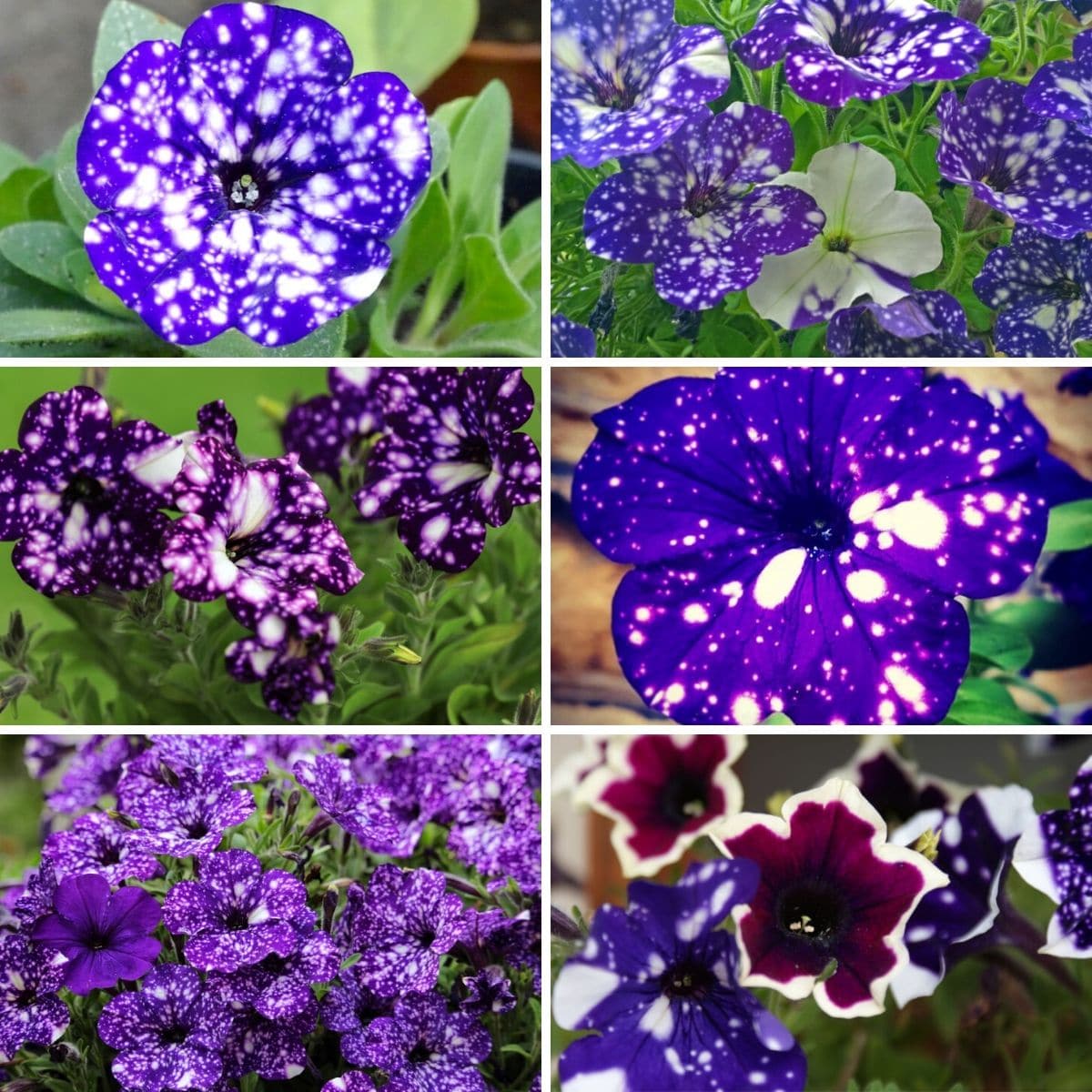
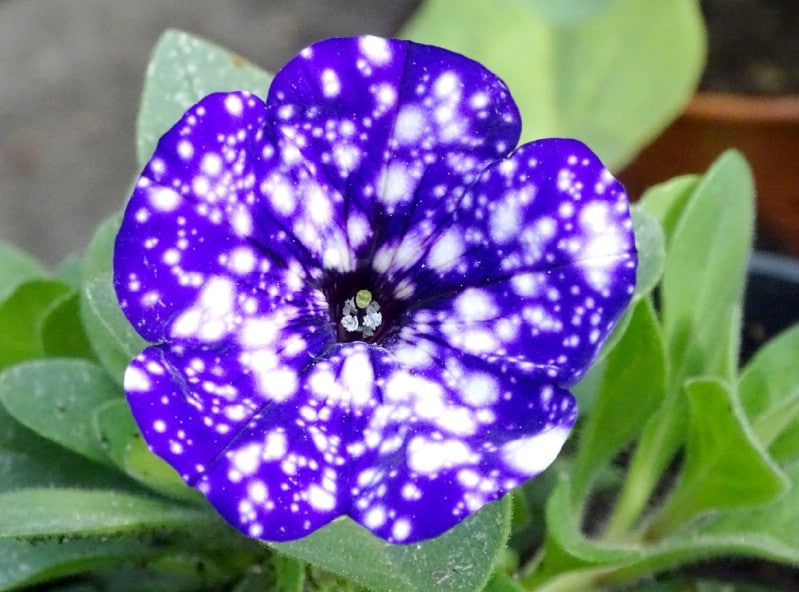
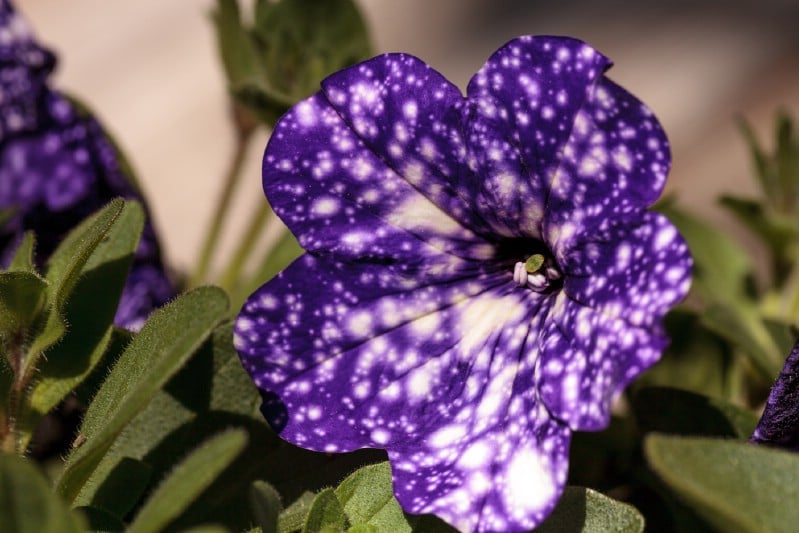
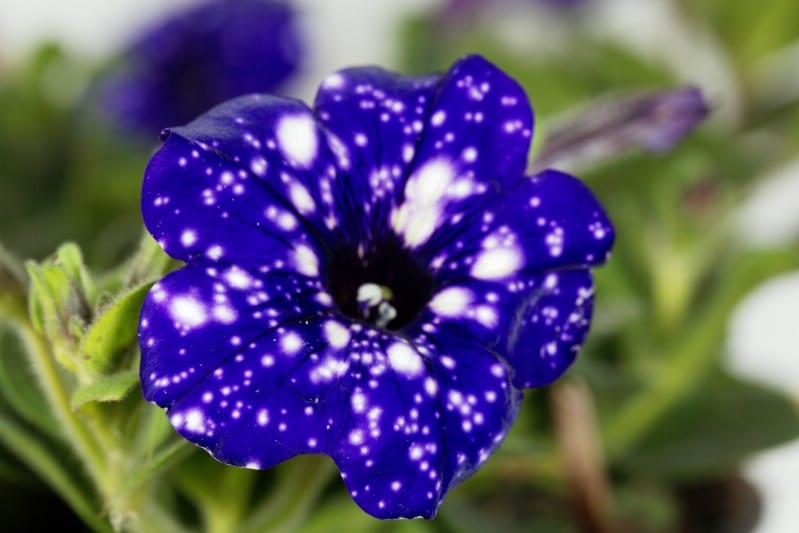
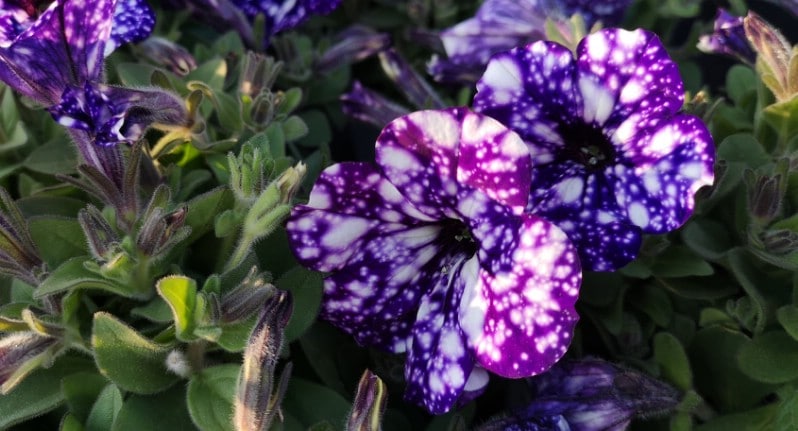
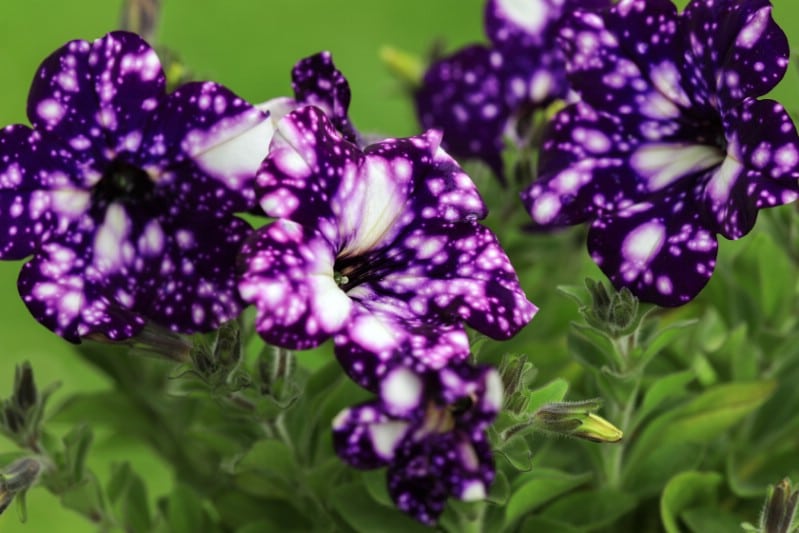
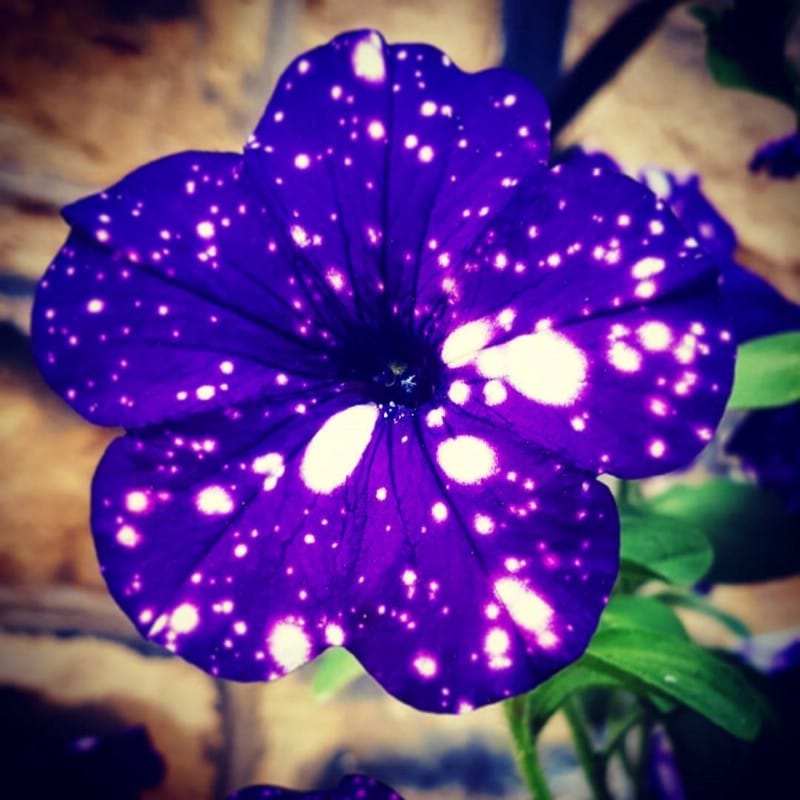
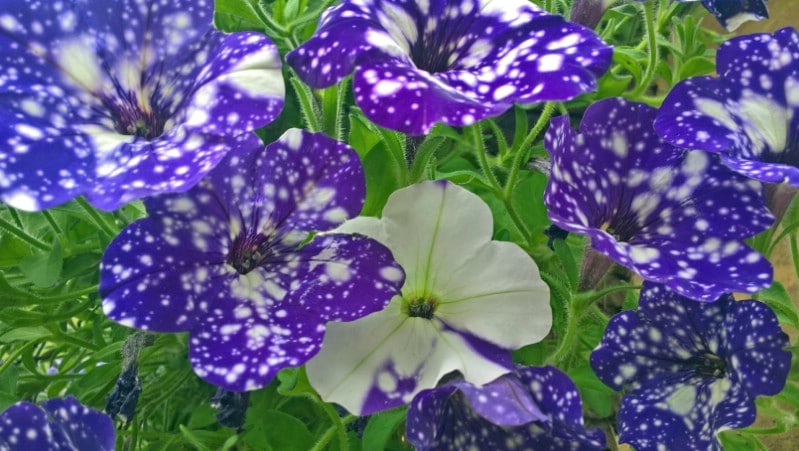
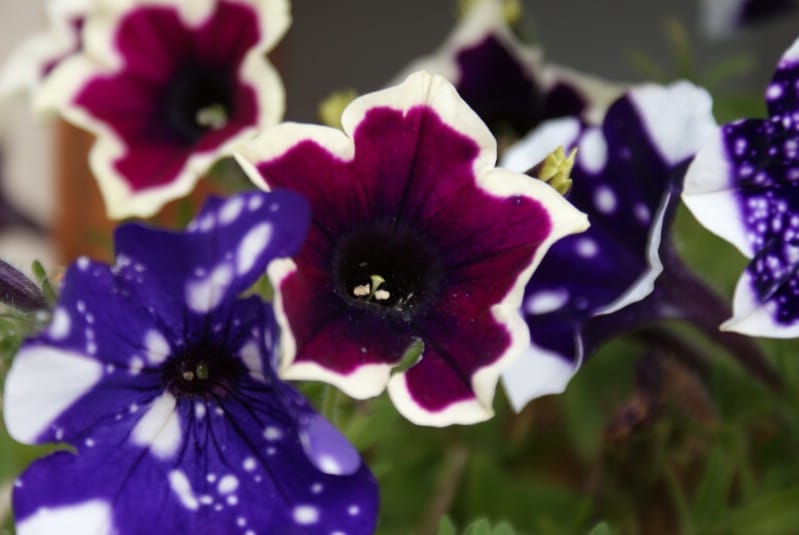
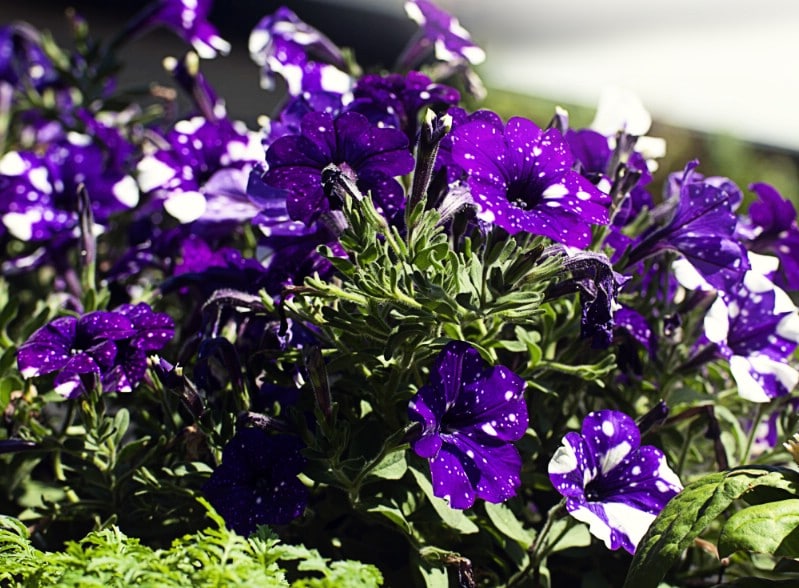
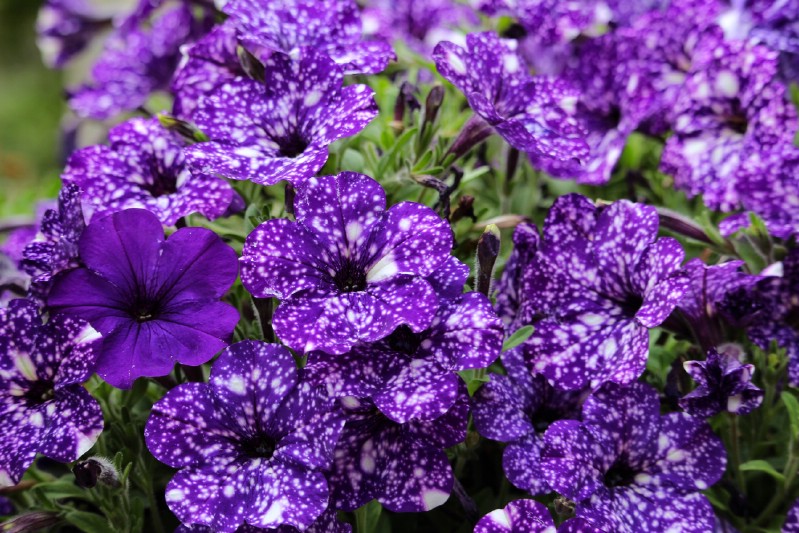




Dreamer
They look so cool!